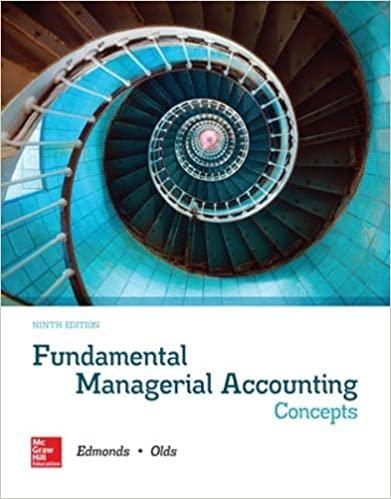



- valuation of production equipment
(The financial statements will be prepared in accordance with Australia Accounting Standards; the monetary unit is the Australian dollars. )
Portable Energy treats land, equipment, and greenhouses as separate asset classes. Since its inception, the company has used the cost model for valuing property, plant, and equipment. However, management now believes that the revaluation model for both land and equipment is more appropriate, under the presumption that fair value presents more relevant financial information to the potential investors. Some financial information, prepared by Portable Energy's accountant, is presented in Tables 1 and 2. The company treats the payments associated with the use of Retail Unit A in the department store part of its operating expenses.
Production Equipment On 1 July 2016, the company acquired a one-of-a-kind, customized piece of production equipment for blending and packaging the energy chews. The equipment was purchased for $120,000, has a salvage value of $10,000, and an estimated useful life of seven years. Portable Energy elected to depreciate the equipment using the straight-line method over seven years, with one full year of depreciation taken in the first and last years of the asset's life. Management believes all components of the equipment depreciate at the same rate. The initial batches of Dragon Energy were produced in 201?. Management believes that neither the market nor the cost approach included inAASB 13 is relevant in this situation. As of 30 June 2018, management calculated the fair value ofthe equipment as $180,151 based on a discounted cash flow [DCF} model calculated using its estimated cost of capital and its own assumptions about future cash flows. Table 4 presents Portable Energy*s DCF model and the resulting calculations. The auditors cautioned Portable Energy's management team that the fair value revaluation model described in AASB 1 16 must be used for all assets within the same class. The auditors also emphasised that AASB 116 allows for revaluation when "the fair value can be measured reliably," and that, after the revaluation, management needs to monitor the fair value of the asset to assure that the asset's canying value continues to approximate the fair value. They added that AASB 1 3 clearly explain that present value measurements should be based on the risk- free rate and a risk premium that represents the price for bearing the uncertainty inherent in the cash flows. Management replied that they believe the fair value is important to report under the company's current circumstances and that they believe their estimates are appropriate. Based upon a conversation between the auditors and the equipment's manufacturer, the cost for a similar piece of production equipment, roughly approximating the current condition of Portable Energy's equipment, ranges from $110,000 to $125,000. TABLE 4 Management's Production Equipment Discounted Cash Flow (DCF) Assumptions and Model 2017 2018 2019 2020 2021 2022 2023 Dragon Energy Production and Sales in Units 10,000 18,000 20,000 20,800 21,632 22,497 23,400 Revenue per bar 20 400,000 416,000 432,640 449,940 468,000 Variable cost per bar 15 (300,000) (312,000) (324.480) (337.455) (351,000) Annual fixed costs of greenhouse operations 30,000 (30,000) (30,000) (30,000) (30,000) (30,000) Annual fixed costs of production operations 30,000 (30,000) (30,000) (30,000) (30,000) (30,000) Net cash flow 40,000 44,000 48,160 52,485 57,000 Discounted at 10% cost of capital 180,151 36,364 36,364 36,183 35,848 35,393 Book value production equipment: Purchase price 120,000 120,000 Accumulated depreciation (1 and 2 years) 15.714 31.429 Book value 104.286 88,571 Fair value -book value 91.580TABLE 1 Statement of Comprehensive Income as Prepared by Management For the Year Ended June 30 2017 2018 Sales revenue $200,000 $360,000 Cost of sales: variable costs of production 150,000 270,000 Cost of sales: fixed costs of greenhouse operations 30,000 30,000 Cost of sales: fixed costs of production operations 30,000 30,000 Cost of sales: depreciation expense 20, 194 20,194 Gross profit (30,194) 9,806 Administrative and operating expenses 100,000 100,000 Net loss (130,194) (90,194) Other comprehensive income - equipment revaluation (180,151 - 88,572) 91,579 Other comprehensive income - land revaluation (93,000 - 80,000) 13,000 Comprehensive income (loss) (130,194) 14,385TABLE 2 Operating Assets as Drafted by Management 2017 2018 Land (2017 at cost, 2018 at fair value) $80,000 $93,000 Production equipment (2017 at cost; 2018 at fair value) 120,000 180,151 Less accumulated depreciation (15,714) 0 Greenhouses, at cost 1 12,000 112,000 Less accumulated depreciation (25 years) (8,960) (13,440) Subtotal 287,326 371,711 Capitalized greenhouse costs: Growing environment 12,000 12,000 Dragon fruit seeds 2,000 2,000 Total greenhouse costs 14,000 14,000 Total operating assets 301,326 385,71 1














